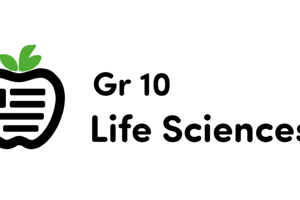Podcast
Questions and Answers
Which three elements are often found in organic compounds? (Select all that apply)
Which three elements are often found in organic compounds? (Select all that apply)
- Carbon, hydrogen, and oxygen (correct)
- Nitrogen, hydrogen, and phosphorus
- Carbon, hydrogen, and iron
- Nitrogen, hydrogen, and oxygen (correct)
Which of the following is the most abundant biomolecule on Earth?
Which of the following is the most abundant biomolecule on Earth?
- Lipids
- Carbohydrates (correct)
- Nucleic acids
- Proteins
The sugar found in RNA is:
The sugar found in RNA is:
- Deoxyribose
- Ribose (correct)
- Erythrose
- Ribulose
Linkage between two monosaccharides is:
Linkage between two monosaccharides is:
Which of these are correct combinations of monosaccharides to form disaccharides? (Select all that apply)
Which of these are correct combinations of monosaccharides to form disaccharides? (Select all that apply)
Sucrose consists of:
Sucrose consists of:
Maltose consists of:
Maltose consists of:
Lactose is an example of:
Lactose is an example of:
The sugar found in milk is:
The sugar found in milk is:
Polysaccharides are:
Polysaccharides are:
Which of the following carbohydrates is not a polysaccharide?
Which of the following carbohydrates is not a polysaccharide?
Which of the following statements is true about polysaccharides?
Which of the following statements is true about polysaccharides?
Dietary fibers are rich in:
Dietary fibers are rich in:
Which type of prosthetic group is present in glycolipids?
Which type of prosthetic group is present in glycolipids?
Lipids have the following properties:
Lipids have the following properties:
ATP is:
ATP is:
Which of the following acts as a thermal insulator in mammals?
Which of the following acts as a thermal insulator in mammals?
Which one of the following nucleotide bases is not found in DNA?
Which one of the following nucleotide bases is not found in DNA?
Which one of the following nucleotide bases is not found in RNA?
Which one of the following nucleotide bases is not found in RNA?
Ribosomes are important because they help in:
Ribosomes are important because they help in:
ATP is made of:
ATP is made of:
How many amino acids make up a protein?
How many amino acids make up a protein?
Which of the following statements is true about proteins?
Which of the following statements is true about proteins?
The protein present in hair is:
The protein present in hair is:
Pepsin and trypsin are enzymes that are characterized as:
Pepsin and trypsin are enzymes that are characterized as:
In mammals, the major fat in adipose tissues is:
In mammals, the major fat in adipose tissues is:
The linkage that joins two amino acid units is called:
The linkage that joins two amino acid units is called:
Bile is produced by:
Bile is produced by:
Which of the following statements is true about lipids?
Which of the following statements is true about lipids?
What is a bond between amino acids called?
What is a bond between amino acids called?
Study Notes
Introduction to Organic Compounds
- Organic compounds contain carbon, hydrogen, and often oxygen.
- Carbon is the backbone of organic molecules, forming long chains and complex structures.
Carbohydrates
- Monosaccharides (Simple Sugars): Units of carbohydrates that cannot be broken down further. Examples include glucose, fructose, and galactose.
- Disaccharides: Formed by the combination of two monosaccharides. Common examples include:
- Maltose: glucose + glucose
- Sucrose: glucose + fructose
- Lactose: glucose + galactose
- Polysaccharides: Complex carbohydrates formed by chains of monosaccharides. Examples include:
- Starch: Primary energy storage in plants.
- Glycogen: Primary energy storage in animals, stored mainly in liver and muscles.
- Cellulose: Major structural component of plant cell walls, provides dietary fiber.
Lipids (Fats)
- Lipids are insoluble in water but soluble in fat solvents.
- They are high in energy content and serve as a primary energy source.
- Types of Lipids:
- Triglycerides: Most common type, stored as fat in adipose tissue.
- Phospholipids: Key components of cell membranes.
- Steroids: Include cholesterol, a vital component of cell membranes and a precursor to steroid hormones.
- Functions of Lipids:
- Energy storage
- Structural components of cell membranes
- Insulation
- Protection of vital organs
Proteins
- Proteins are polymers of amino acids.
- Peptide bond: The bond that links amino acids together to form proteins.
- Functions of Proteins:
- Structural (e.g., keratin in hair, collagen in connective tissue).
- Transport (e.g., hemoglobin carries oxygen in the blood).
- Enzymes (catalyze biochemical reactions).
- Hormones (e.g., insulin regulates blood sugar).
- Defense (e.g., antibodies protect against disease).
Nucleotides
- Nucleotide Structure: Each nucleotide consists of a three-part structure:
- Pentose sugar: Deoxyribose in DNA, ribose in RNA.
- Phosphate group: Provides negative charge.
- Nitrogenous base: Adenine (A), Guanine (G), Cytosine (C), Thymine (T) in DNA, and Uracil (U) in RNA.
- DNA (Deoxyribonucleic acid): Genetic material in most organisms.
- Double-stranded structure.
- Bases pair specifically: A-T, G-C.
- RNA (Ribonucleic acid): Involved in protein synthesis.
- Single-stranded structure.
- Contains uracil (U) instead of thymine (T).
- ATP (Adenosine triphosphate): The primary energy currency of cells.
- Contains adenosine (a nitrogenous base) and three phosphate groups.
Ribosomes
- Composed of RNA and protein.
- The site of protein synthesis in cells.
Oxidative Phosphorylation
- Process that produces ATP, the primary energy currency of cells.
- Occurs in the mitochondria of cells.
Studying That Suits You
Use AI to generate personalized quizzes and flashcards to suit your learning preferences.
Related Documents
Description
Test your knowledge on organic compounds, focusing on carbohydrates and lipids. This quiz covers the structure and types of carbohydrates, including monosaccharides, disaccharides, and polysaccharides. Additionally, explore the properties and functions of lipids in biological systems.




